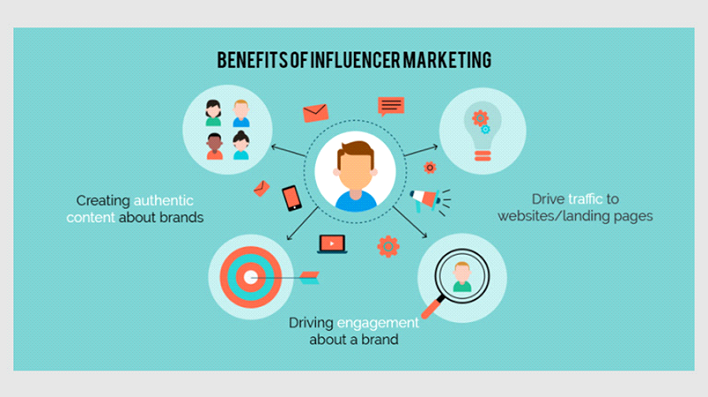
8 Latest Social Commerce Trends for 2023

A Huge shopping revolution is happening… And you happen to be scrolling through it right now! Social media and E-Commerce have both been exploding trends in the age of COVID-19.
Social commerce is actually a product of both of these trends.
Social commerce is the use of social media to sell products seamlessly on social platforms without ever leaving the social media site.
Now, social commerce is dominating online retail! As more consumers turn to social media platforms for shopping, there are new trends emerging within social commerce. Brands have always recognized the power of social networks, and now they're turning to social commerce as an effective way to connect with customers across multiple channels.
Find out what's next for social commerce! And let’s discover some of the hottest social commerce trends for 2023!
What is Social Commerce?
Social commerce is the use of social networks to market products or services. Social commerce is a great way to connect with customers and build brand loyalty. Social commerce is a form of marketing where consumers interact with retailers through social media platforms. The main purpose of social commerce is to build brand awareness and trust through conversations between customers and brands.
An excellent example of a social commerce website is Instagram, which allows users to share their experiences at events, restaurants, shows, etc., and to purchase products directly from the website.
What is the Future of Social Commerce?
Is social commerce just a fad or the future of ecommerce? Recent trends show that Facebook and Instagram are becoming more important marketing channels for brands. And they are also shifting from being purely advertising platforms to becoming ecommerce platforms too. What does this mean for brick-and-mortar businesses?
It’s hard to predict the future of social commerce, but if you check all the facts, you got one obvious thing – social shopping and commerce is changing the way we interact with social media.
- Globally, social commerce is expected to grow three times as fast as traditional commerce to $1.2 trillion by 2025, up from $492 billion currently.
- 60% of people discover products on Instagram
- 78% of Americans use Facebook to find new products
- 30% of consumers would buy through social media platforms like Facebook, Instagram, Twitter, or Snapchat.
Social commerce has become a huge phenomenon, and now is the time to get involved. Brands are using their customer base on Facebook and Instagram to promote and sell their goods, services, events, and experiences. As a result, these platforms are becoming ever more important for businesses.
Yes, social commerce is definitely a thing, but the jury is out. According to recent studies, customers prefer to shop through social media rather than visiting a store.
Social commerce is currently being seen as the future of online retailing. Why? Because social commerce has been proven time and time again to generate higher conversion rates than traditional forms of shopping.
That's why brands should consider integrating these social commerce trends in 2023 into their marketing strategies. To help you get started, here are some recent examples of how brands have taken advantage of social commerce.
The Important Social Commerce Trends in 2023
Shoppable Instagram Post
What if we told you that you could create a Shoppable Image and sell it directly to your followers? That’s exactly what Shoppable does.
Instagram has become an important tool for brands who want to reach their target audience. The latest update introduced the Shop tab into Stories and posts, allowing brands to introduce new products and collect orders. Now, it’s possible to turn these images into a monetized story.
By using Shoppable, you can now add a unique product or service to your image. After adding an item, you can start collecting orders from your audience.
Also read:- Instagram Shop Tips For A High Converting Store
Pinterest Rich and Buyable Pins
Pinterest has come up with a new feature called Rich and Buyable PINS. This feature allows you to turn your pin into rich pins, so you can monetize them.
Rich and Buyable Pin allows members to upload their pins and earn cash through ads displayed on their pins. The idea behind this feature was to give users a better way to monetize their pins. This feature is meant to encourage users to start uploading their pins and increase their earning potential
Influencer Marketing
There are many different ways that brands use social commerce sites to promote their business. One way is through influencer marketing. Influencers are people who have a large following of fans on various social media platforms such as YouTube, Twitter, Facebook, Snapchat, Instagram, and TikTok. These influential often receive compensation for promoting specific brands.
Brand-related content posted by these influencers generates engagement, which encourages followers to buy their products. This type of advertising is called sponsored posts. Another popular method is influencer marketing, where influencers endorse particular products without receiving any kind of compensation.

Live Streaming
Social Media Commerce is not just about posting content, and ideas. You need to know how to use live-streaming platforms for your e-commerce store to make sure you get maximum reach and engagement.
The internet is full of people who love sharing videos. Live streaming video platforms are becoming increasingly popular with businesses across the globe. With the increasing number of brands using live-streaming, its popularity is growing exponentially. Live-streaming allows brands to interact directly with consumers and build a community around their products. You can also reach out to new audiences and engage them.
However, it comes with certain challenges such as managing the live video feed, keeping viewers engaged, and ensuring a good experience for both parties.

UGC
User-generated content (UGC) is also included in the social commerce trends 2023 list, as it is a great way to bring together people who share common interests. Many companies and brands leverage UGC to increase their visibility. For example, Twitter and Instagram allow users to upload photos or short videos to their platforms, where they can gain exposure and followers from similar interest groups. In addition, brands can create user accounts on these same sites to interact directly with consumers. By using UGC strategies, brands can engage audiences and improve awareness at little cost.
AI (Artificial Intelligence)
The advent of AI has also changed the way companies market to consumers and understand their behaviours. In fact, retailers have begun using chatbots to help them understand shoppers' intentions. Chatbots are intelligent virtual assistants that provide personalized recommendations and insights to consumers, giving them exactly what they want at the right time.
Voice Search
One of the ways brands are listening is through voice search. Voice search refers to a search conducted via a spoken word. A growing number of users are turning to voice search to conduct searches on their smartphones instead of typing words into the search bar. According to Google, 60% of internet traffic is being conducted via voice search.
Voice search also makes it easier to engage with customers and helps them navigate the website. Another benefit of voice search is that it helps keep customers on the site longer. By reducing friction between a user and a business, voice search increases engagement rates.
Frictionless Experience for Customer
Nowadays, more and more brands talking about frictionless customer experiences (FCE). What does that mean exactly? Is FCE something new, or does it go back further than we thought?
A frictionless customer experience (FCE) is simply an excellent user experience without the pain points associated with having to complete actions/tasks, such as checkout, filling out forms, signing up for services, etc. This is the important social commerce trends for 2023. In today's world, consumers expect businesses to enable them to purchase items, access information, get support, etc., immediately and seamlessly. However, the challenge lies in creating these experiences with a positive brand impression, keeping up with technological advancements, and meeting compliance standards.
When looking at successful companies, they typically share some common characteristics. They’re able to provide a great FCE, and they take advantage of opportunities to simplify their customers' lives. These companies tend to have higher levels of loyalty, better brand recognition, and greater growth rates.
Wrapping It Up:
Innovation is always changing, and so is the way we interact with technology. Today's consumers have grown accustomed to being able to buy anything they want online at the click of a button.
Social commerce has been around as long as ecommerce. However, social commerce is an evolving platform that offers many new features, which will continue to lead consumers through the purchase journey with merchants.
Social commerce will continue to grow exponentially, providing new tools and opportunities to increase revenue, streamline customer service and boost brand awareness. If you want to sell products or services through social channels, you should build a strong presence on social media channels and have to implement these future trends of social commerce. Connect to our social marketing experts for more details.
Recommended read:- Latest SEO Trends For Ecommerce In 2023
